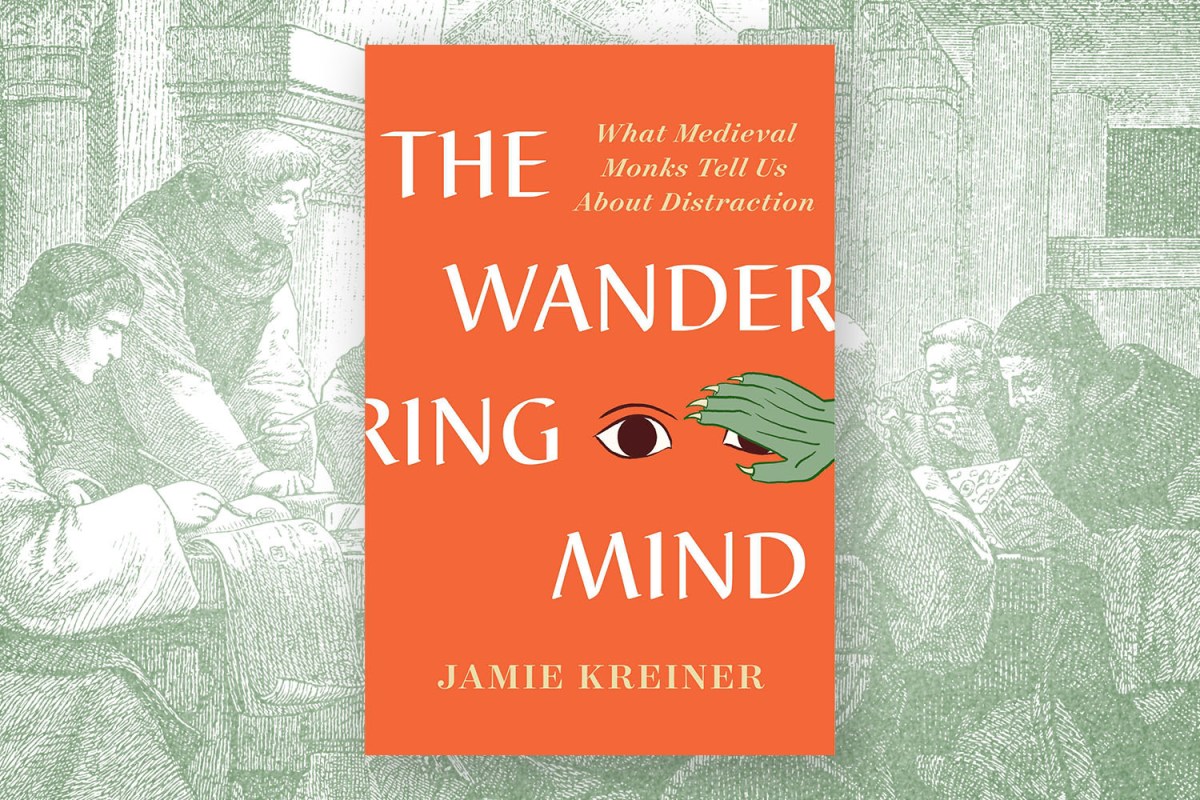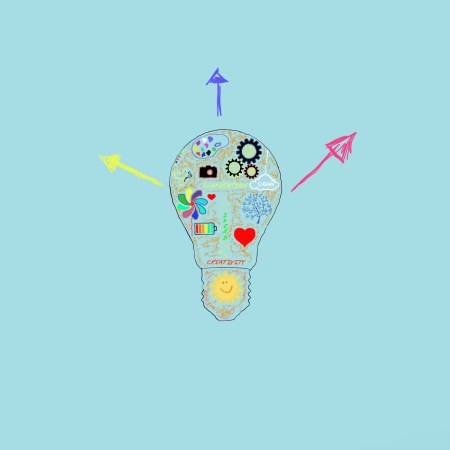In the modern world, it’s increasingly difficult to keep your concentration focused on a single task at hand. This is something most people reading this can attest to based on their own experience, but it’s also backed up by scientific studies and a growing array of scholarship. Now, a surprising authority has emerged on staying focused: medieval monks who have been dead for centuries.
In her new book The Wandering Mind: What Medieval Monks Tell Us about Distraction, University of Georgia professor Jamie Kreiner revisits the historical archives and examines the ways in which monks — primarily Christian monks in Europe and the Middle East — grappled with questions of concentration. As she notes, this wasn’t simply about productivity or efficiency. Some of these monks saw distraction as a sign of demonic activity, raising the stakes considerably.
What’s most interesting about Kreiner’s book is the way that the lives of centuries-old monks seem applicable to the present mode. There are more than a few parallels to be found between then and now, so InsideHook spoke with Kreiner to learn more about what we can learn from this piece of history and what else we’ll find in The Wandering Mind.
InsideHook: Concentration and distraction — and efforts to address both via discipline, apps or something else entirely — are often up for discussion in 2023. When did you first see the connection between the very contemporary aspects of these things and the habits and practices of medieval monks?
Jamie Kreiner: I first noticed it back when I was in college in the early aughts. I didn’t have much of a problem with digital distraction back then — I didn’t have a cellphone, and my laptop had actually been stolen, so I was writing assignments on an old typewriter. But like any college student, I found that it could be difficult to concentrate when working at something for long stretches, and I was surprised to see the early medieval monks whom I was reading about wrestling with the same thing. It was one of my first experiences with that strange double feeling you get from encountering history: the surprise recognition of common ground despite how much has changed.
Early on in The Wandering Mind, you talk about the idea of a “monastic laboratory” for experimentation on different physical and psychological solutions to distraction. Do you see a comparison there between the activities of monasteries centuries ago and modern-day startup culture?
First, a shout-out to the historians Albrecht Diem and Claudia Rapp, who actually coined that phrase! One could point to some similarities between early Christian monasticism and 21st-century startup culture: the innumerable different pilot projects, the sheer optimism about the benefits to society at large and even the enthusiasm of investors. But the demography of monasticism was more capacious (in terms of class, gender and race), and of course monks’ goals had nothing to do with scalability or profit in the ways we understand those things. They were thinking of eternal recompense calculated according to a divine moral order, and they tried to structure their entire lives in accordance with those ethics.
As you discuss in your book, fasting has a long history that also dates back to medieval monks. As a historian and scholar of that period, what do you make of its return to prominence as a method for physical fitness?
I’m not sure it ever really went away! Fasting even predates Christian monasticism, so its history is extensive. But behind these continuities in practice, a lot has changed. Much of the popular conversation around fasting today, for example, focuses on its physical benefits or even more narrowly on its contribution to weight loss. But for the early monks (and for the ancient philosophers who preceded them), fasting was important because of its benefits for the mind. The somatopsychic aspects of physical training were what really interested them.
At various points while reading The Wandering Mind, I was reminded of Patrick Leigh Fermor’s A Time To Keep Silence, where he describes spending time in monasteries to work on various writing projects. Do you see any other efforts that people in the secular world have made to utilize monks’ techniques to achieve their own goals — whether focused on a specific project or productivity more generally?
I teach a course for college freshmen called Medieval Mind Games, in which students experiment with different medieval cognitive techniques to help them with their other college classes. But although the practices that late antique and early medieval monks developed can be beneficial for concentration, I’d be wary of telling students that monastic practices can help improve productivity. Early medieval monks weren’t capitalists: they weren’t trying to get more done or increase their outputs. They were trying to improve themselves and their relationship to the divine. And that often meant spending more time doing something, exploring the complexity of a problem rather than rapidly resolving it.
The bulk of The Wandering Mind focuses on Christian monks, though you do make some references to their Buddhist, Daoist and Muslim counterparts. Do you get the sense that many of the techniques you describe were shared across faiths, or were many of these specific to medieval Christianity?
Scholars such as Halvor Eifring, who have compared meditational practices across different religious traditions, have pointed to some very broad similarities: all Eurasian and North African meditative traditions, for example, share a goal of inner transformation and involve some kind of attention-modification and other formal techniques. But the differences are much more striking — not just between different religions but even within a seemingly homogeneous religious culture. So for example, the meditations of many Christian monks in the early Middle Ages took the form of association-building through linked words and concepts that ideally culminated in a multi-vectored analysis. Whereas other monks thought that this meditational practice was too rambling and risky and preferred to meditate with mantras (such as a brief biblical verse). Meanwhile, as the historian Eric Greene has shown, Buddhist monks in China in the same centuries were debating whether their own meditations should or should not result in visions: were visions useful diagnostics about a monk’s spiritual status, or were they, essentially, distractions? To a historian of religion, these debates and differences are always worth taking seriously.
You discussed the idea of monks “abandoning the world,” and I’m curious — do you see any parallels with that and, say, more and more people exploring the idea of remote work?
Today we work remotely to skip the commute, to preserve some flexibility in our schedule and to be closer to the things we care about: our apartment, our family, our fridge, whatever. Early Christian monks were trying to work against all these impulses. They were trying to distance themselves from the people, places and routines they’d once valued, and they deliberately avoided doing things purely for the sake of convenience. The monk Abraham of Diolkos once reportedly said to the monks Germanus and John Cassian that he could have set up his dwelling right next to the Nile, but instead he moved four miles away from the river, specifically so he’d have to haul his water the whole way back. He said he was trying to follow the apostle Paul’s advice: “Every man shall receive his own reward according to his own labor.” On the other hand, what both remote workers and monks have in common is that both setups are the inverse of Severance: for them, the boundary between work and home is nonexistent.
One of the most fascinating aspects of The Wandering Mind was when you discussed monks essentially comparing notes on their techniques of choice, which read like a pre-internet version of a social network or a game’s leaderboard. When writing the book, did you find unexpected parallels with the modern world?
There are so many to choose from! Maybe my favorite was the monk who sorted his allotment of bread into different containers, one for each day of the week, because otherwise he couldn’t remember if he’d eaten that day. Tell me you don’t think of a pill organizer when you hear that story!
If someone’s read your book and is curious to learn more about medieval history and theories of concentration, where would you suggest they go for additional reading, listening or viewing?
Definitely check out Mary Carruthers’s excellent books, especially The Craft of Thought and The Book of Memory and also a translated collection of medieval texts about mnemonic techniques that she co-edited with Jan Ziolkowski, called The Medieval Craft of Memory. I use that last book in my Medieval Mind Games class. Readers who are interested in more historical context for Christian monks’ ideas about thinking should check out Inbar Graiver’s Asceticism of the Mind and Jessica L. Wright’s The Care of the Brain in Early Christianity. And for introductions to late antique and early medieval history more generally, try Julia Smith’s Europe after Rome, Chris Wickham’s Inheritance of Rome, and two of Peter Brown’s many beautiful books, The World of Late Antiquity and The Rise of Western Christendom.
The Charge will help you move better, think clearer and stay in the game longer. Subscribe to our wellness newsletter today.























